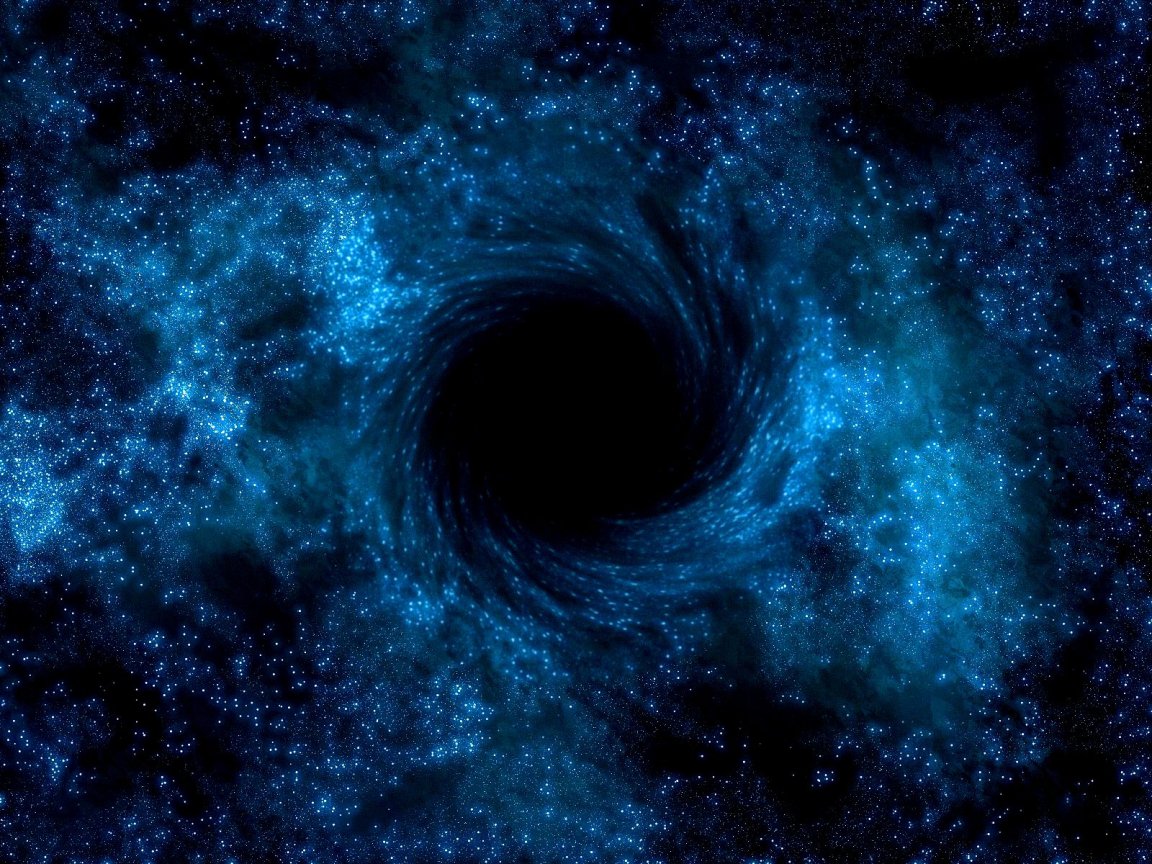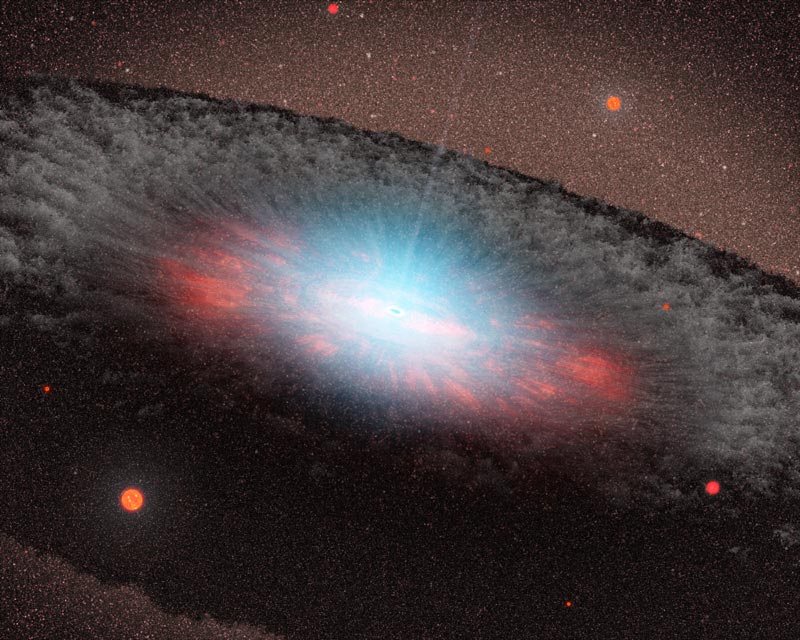
Monster Black Holes
Professor Andrew King, from the University of Leicester’s Department of Physics and Astronomy, recently published a paper claiming that black holes located in the center of galaxies could grow to be 50 billion times the mass of our solar system’s Sun before expending the gas discs they require to fuel themselves.
Professor King’s paper, ‘How Big Can a Black Hole Grow?’ is available on Arxiv.

The purpose of this study was to calculate the maximum size that a black hole could reach. In order to determine this, King looked at the regions surrounding black holes. Ultimately, around black holes, gas settles into an orbiting disc. This gas generally loses energy and falls inwards, feeding the black hole and allowing it to grow; however, these discs are known to become unstable and, if they grow too large, are prone to crumbling into stars.
With such a thick ring, the only way a black hole could get larger is if a star happened to fall straight in, which is a little unlikely. As such, black holes must maintain stable rings of gas to keep growing – the rings cannot form into stars.
And according to the research, 50 billion Suns is seen as the upper limit before the coalescing into stars happened.
Of course, it is possible for a black hole to grow larger. But King proposes that the only method for a black hole to exceed this mass is if, as previously mentioned, a star fell straight into it or if it happened to merge with another black hole.
What Does this mean for Black holes?
“The significance of this discovery is that astronomers have found black holes of almost the maximum mass, by observing the huge amount of radiation given off by the gas disc as it falls in. The mass limit means that this procedure should not turn up any masses much bigger than those we know, because there would not be a luminous disc” King said in the press release.
He continues by noting that, if a larger black hole formed, there would be no light: “Bigger black hole masses are in principle possible—for example, a hole near the maximum mass could merge with another black hole, and the result would be bigger still. But no light would be produced in this merger, and the bigger merged black hole could not have a disc of gas that would make light.”
But fortunately, we don’t have to worry about super-supermassive black holes wandering about the cosmos completely invisible. We could detect it in other ways; for example, we could see it as it bent light rays passing very close to it (known as “gravitational lensing”) or if we detect gravitational waves that Einstein’s General Theory of Relativity predicts would be emitted as the two black holes merged.